Images of Črmošnjice on postcards through time
The village inn PETSCHAUER, around 1930,
printed matter, copperplated-print.
Petschauer, around year 1960, black-and-white photograph.
Petschauer, sent on 17. 7. '78, photo- postcard.
1899–1942
1945–2017
The
period
after
the
Second
World
War
was
strongly
marked
an
image
of
Črmošnjice
and
surrounding
villages.
The
eviction
of
the
majority
German-speaking
population
has
considerably
changed
cultural
and
social
outline
of
the
entire
valley
and
the
surrounding
villages.
Geopolitical
situations,
the
formation
of
the
new
state
of
Yugoslavia
and
socio-political
imbalances
(the
settlement
of
new
populations,
colonizing
and
implementation
of
agrarian
reform)
presented
a
far-reaching
change
of
the
character
and
landscape.
Remains
of
documentary
material
which
may
be
disseminated
by
the
former
German
colonization
Črmošnjice
and
its
surroundings
are
very
rare.
A
method
of
reading
material
by
using
postcards
is
an
important
contribution
to
addressing
the
cultural
identity
of
Gottscheer's
language area in this part of Slovenia..
After
the
emigration
of
the
Gottscheers
the
village
remained
almost
entirely
empty.
Italian
occupiers
remained
in
until
the
spring
of
1942.
During
the
war
various
partisan
units
worked
in
the
village.
There
were
also
Headquarters
of
NOV
and
POS,
some
cultural
workers
and
others.
At
the
end
of
the
Second
World
War
Črmošnjice
become
unrecognizable
image
of
a
past
time.
Črmošnjice
after
the
war
was
predicted
for
colonization,
and
in
a
short
time,
the
population
multiplied.
The
values
of
socialism
and
agrarian
reform
as
well
as
the
flight
from
the
countryside
to
the
city
contributed
once
again
to
a
decrease
of
population
in
Črmošnjice
in
the
eighties.
Today,
there
are
no
economic
operators
in
the
village
left,
rectory
is
removed
and
also
primary
schools
is
abolished.
Perhaps
all
of
the
above
has
not
only pessimistic connotations because the image of Črmošnjice despite that, shows a different picture.
The
number
of
inhabitants
is
the
highest
of
all
recorded
time.
The
valley
is
gaining
recognisability
with
natural
potentials,
which
is
a
region
surrounded.
Investing
in
tourism
infrastructure
in
the
nearby
Gače
and
a
presence
of
CSOE
Dom
Lipa
(Hall
Lipa)
Črmošnjice
forms
a
responsible
attitude
towards
the
natural
environment
and the development strategy of the municipality of Semič to which Črmošnjice today administratively belongs.

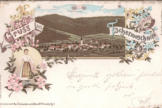

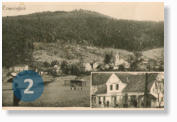
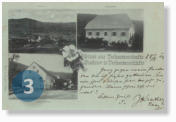
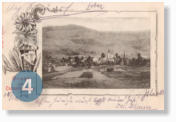
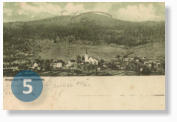
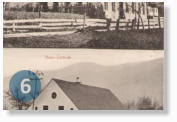
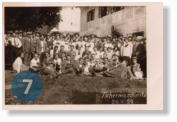
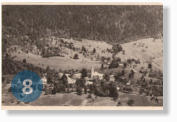
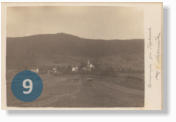
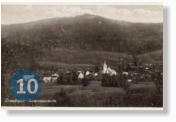

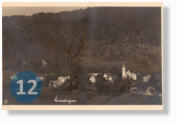
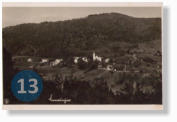
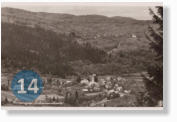
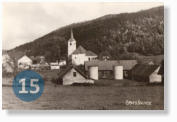
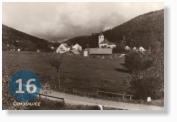
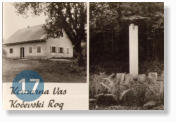
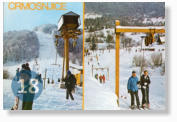
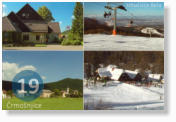
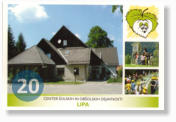
The
collection
contains
some
1800
units
of
postcards
and
prints
of
the
local
studies
collection
Gottscheer
Postcards,
dating
from
1844
till
today.
The
purpose
of
the
digitalised
collection
is
to
preserve
at
least
a
small
part
of
such
imagery
for
future
generations.
The
material
is
intended
primarily
for
descendants
of
displaced
Gottschee
Germans
around
the
world,
and
is
presented
in the English language.
Seed
funding
for
the
presentation
of
the
first
thirty
postcards
of
Koprivnik
was
provided
by
compatriot
Mark
Simonitsch
from
Chatham, Massachusetts.
We
ask
and
welcome
you
to
consider
supporting
the
expansion
of
our
collection
with
your
contribution,
and
thank
you
in
advance for your generosity.
Institute of Preservation and Cultural Heritage Nesseltal-Koprivnik - Zavod Nesseltal Koprivnik
Koprivnik 13, 1330 Kočevje, Slovenija - Tax number: 13212087
Bank account or IBAN: SI56 2900 0005 5558 644, Unicreditbank Slovenija PE Novo mesto - BIC: BACXSI22
POSTCARDS COLLECTION OF ČRMOŠNICE (TSCHERMOSCHNITZ)

Geographicaly
disunited
Kočevska
land
on
the
east,
was
named
by
german
geographers:
»Walden
in
Moschnitze.«
Once
Tschermoschnitz,
today
Črmošnjice,
is
nucleated
village
between
crossroads
of
Gorjanci
and
Kočevski
rog.
Image
of
village
from
past
with
artistic
depiction
is
very
well
documented
by
records
from
postcards.
Regarding
village
adressing
(Tschermoschnitz,
Tschermosnitz,
Cermosnize,
Čermošnice,
Čermošnjice,
Črmošnjice,
Črnomošnjice
…),
there
is
as
many
versions
as
postcards
published.
With
its
artistic
image
and
postal
message,
postcards
play
an
important
role,
due
to
a
treatment
of
a
place.
Therefor
it
is
not
a
suprise,
that
places
and
events,
till
the
end
of
the
First
world
war,
are
very
well
documented
and
preserved.
Holders
of
economic
activities
in
the
village,
innkeepers
and
merchants,
issued
poscards
due
to
competative
sense
and
market
shares.
Parallels
among
past
and
present,
regarding
development
of
postcards
without
a
doubt
exist:
postcards
or
scout-card
made
world
go
gaga
over
them
hundred
years
ago.
Selfie
recording
with
digital
content
is
the
latest
trend.
Era,
in
which
we
live,
this
is
a
form
of
analogous
approach,
replaced
by
modern
digital
content.
Furthermore,
record
on
web
has
also
enabled
a
digital
hint.
Therefore
it
is
no
surprise
that
new
kind
of
digital
postcards
are
arising and taking all over, almost everything in that sense.

Johann
Petschauer
(Päulaisch),
from
Črmošnjice
18,
had
during
both
world
wars
a
registration
of
a
pub
and
retail
store
with
mixed
products.
During
one
period
he
also
had
butcher's
store.
As
a
majority
of
all
german
speaking
inhabitants,
all
seven
family
members,
during
28th
and
29th
of
december
1941,
left
Črmušnjice.
The
pub
with
its
economic
building
was
located
in
the
middle
of
the
village.
In
its
direct
vicinity
was
a
taxi
stop,
which
is
well
documented
by
photo,
published
in
1930,
in
mailshot
Progres, »Lower Carniola's metropolis Novo mesto«.
Photography
on
the
second
recording
displays
a
state
after
Second
World
War,
when
in
former
Petschauer's
inn,
renters
were
constantly
changing.
In
the
60's
of
last
century,
Ivan
Deržič
was
a
renter
and
after
him
nomerous
renters
lined
up.
The
renters
often
changed
a
purpose
of
the
facility. Commercial activity in the facility is not being carried out in 2017.
Last
documented
recording
was
taken
in
a
form
of
photocard
in
the
80's
of
last
century.
In
area
for
massage,
townswoman
from
Črmušnjice,
describes birth place.
Based
on
time
sequence
of
recordings,
we
can
analytically
trace
constructional interventions in environment.
From
preservation
profession's
point
of
view,
dimension
of
the
facility
didn't
change,
except
some
renovation
works
on
façade
and
replacements
of
a
roof.
Archival
recordings
in
sequence:
printed
matter,
photography
and
postcard
are
rare
example
of
archived
material
of
preservated
Kočevska's
building
heritage.
From
today's
point
of
view,
postcards
are
important
for
establishing
a
progress
of
urbanism
and
changes
in
landscape in general.
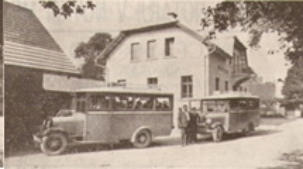

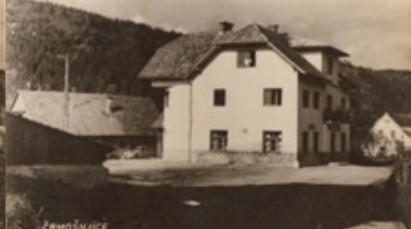
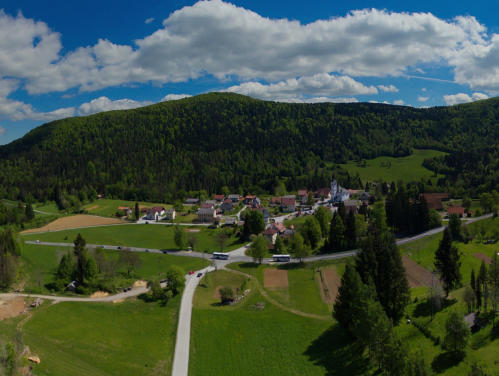

Last
documented
recording
was
taken
in
a
form
of
photocard
in
the
80's
of
last
century.
In
area
for
massage,
townswoman
from
Črmušnjice,
describes birth place.
Based
on
time
sequence
of
recordings,
we
can
analytically
trace
constructional
interventions
in
environment.
From
preservation
profession's
point
of
view,
dimension
of
the
facility
didn't
change,
except
some
renovation
works
on
façade
and
replacements
of
a
roof.
Archival
recordings
in
sequence:
printed
matter,
photography
and
postcard
are
rare
example
of
archived
material
of
preservated
Kočevska's
building
heritage.
From
today's
point
of
view,
postcards
are
important
for
establishing
a
progress
of
urbanism
and
changes
in
landscape in general.
Črmošnjice today

















